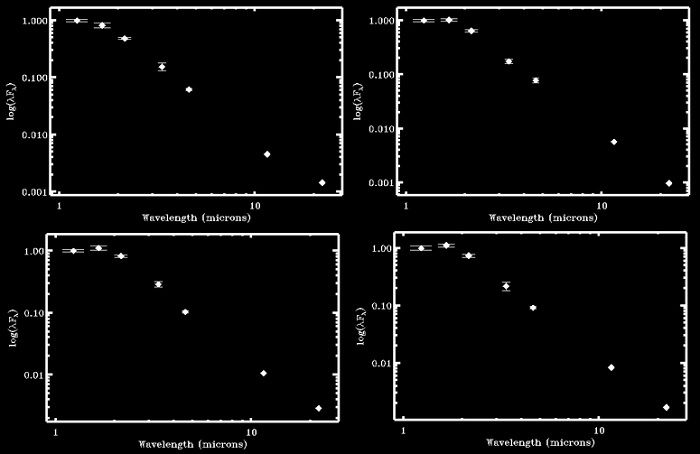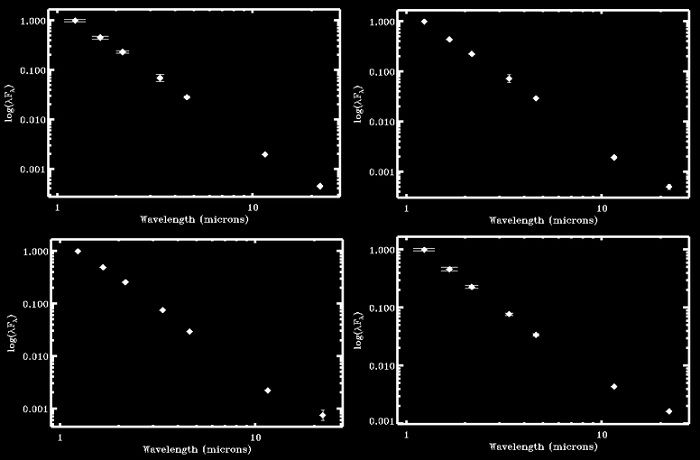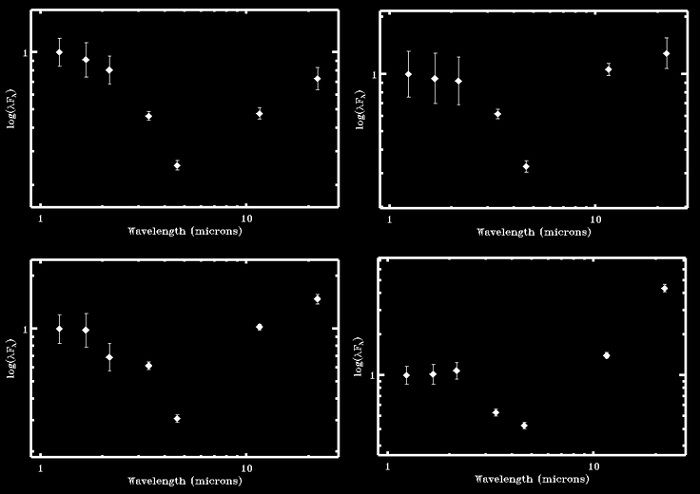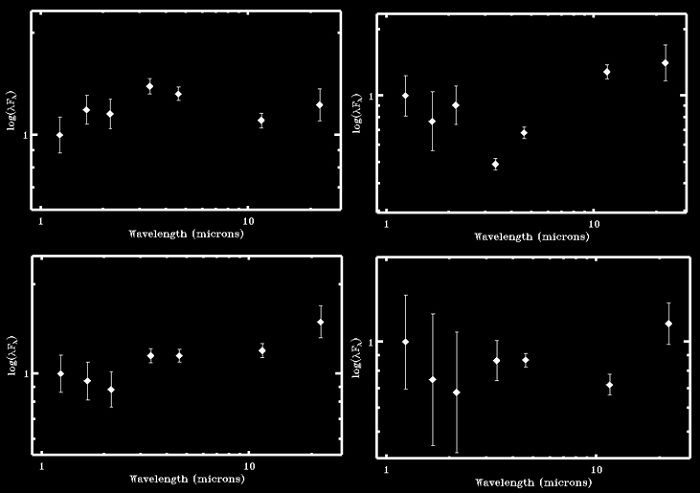SED - Spectral Energy Distribution
-
 by
TED91
moderator
by
TED91
moderator
EDIT: Here it is as a blog post by Marc Kuchner
SED- Spectral Energy Distribution.
What is it? It's a plot of how bright these objects are as a function of wavelength. You can find them on the Talk page.
I just want to show you a few most frequent examples and how to interpret them.
If you missing something, feel free to ask or add some more examples.
Late type stars

AWI0005cm2, AWI0005mue, AWI0005m8k, AWI0005ag0
Early type stars

AWI0006207, AWI00062ka, AWI00062aj, AWI0004y3p
Young Stellar Objects (YSOs)
Their SED sometimes may look similar to AGNs SED and it's hard to distinguish between them. If you aren't sure which one it is, try to find some informations on SIMBAD or VizieR.

AWI0005wau, AWI0002ddn, AWI0002p0g, AWI0005wal
Saturated stars
See that point at 3 microns (fourth point from the left)? It's "lower" than it should be. It suggest that this star could be saturated.

AWI0005ywh, AWI0005yuk, AWI0005x81, AWI0005zgc
Galaxies
We aren't interested in these objects

AWI00009x3, AWI0000fsq, AWI00062j8, AWI0000an0
Quasars and Active Galactic Nuclei (QSO and AGN)
We also aren't interested in these objects
These objects may look as stars to you at first look, because they often appears as a point source of light.
That's one of the reasons why SED can be useful and help you distinguish between them.
AWI00000t3, AWI00005z0, AWI00001hs, AWI00001m3
Planetary nebulae

AWI0002dbc, AWI0005duo, AWI00006ju, AWI00059t3
Please note that all of these are just most frequent examples and SEDs may be different from case to case, especially when those objects are somehow contaminated or blended.
Posted
-
 by
jacedjohnson
by
jacedjohnson
Thanks a lot Ted. This is exactly what I was asking about with that post yesterday. SEDs are also not yet my thing, but I'm trying to learn. This will definitely help.
Posted
-
 by
Artman40
by
Artman40
AGN sometimes looks like stars' SED diagrams, except less pronounced and with bigger error bars.
Posted
-
Right on!; TED91 I'm assuming that if it visually looks like a #good-candidate that the SED and SIMBAD take second fiddle for now.
Posted
-
 by
TED91
moderator
by
TED91
moderator
@onetimegolfer You're assuming right. Sometimes if you aren't sure, then SED can help you.
Posted
-
 by
TED91
moderator
by
TED91
moderator
I just edit my post, so there are more examples now.
Posted
-
This is the type of instruction is what is needed on the opening classifying page. A SED of each target. As each new project goes forward a required SED also displayed if its is different than the first proposal we have done. I had forgotten about this post Thanks TED for the update. Although a Blue* is not a good candidate(?) its SED looks like a square root symbol ; I have one listed in my favorites. Now if we had this to distinguish between stars without further investigation.
Posted
-
 by
Shigeru
moderator
by
Shigeru
moderator
Nice work TED!
Posted
-
 by
TED91
moderator
by
TED91
moderator
I just update the post, you can find here more examples now.
Posted
-
 by
Pini2013
translator, moderator
in response to TED91's comment.
by
Pini2013
translator, moderator
in response to TED91's comment.
Excellent TED!!! I find it really useful.
Posted
-
 by
voyager1682002
moderator
by
voyager1682002
moderator
Thank you for the update TED!
Posted
-
 by
shocko61
by
shocko61
Hi TED91 . shocko61 Ian here .I am new at this , Thankyou for this , it is what I will be referring to for a long time to come . As Pini2013 says Excellent . Cheers , Ian
Posted